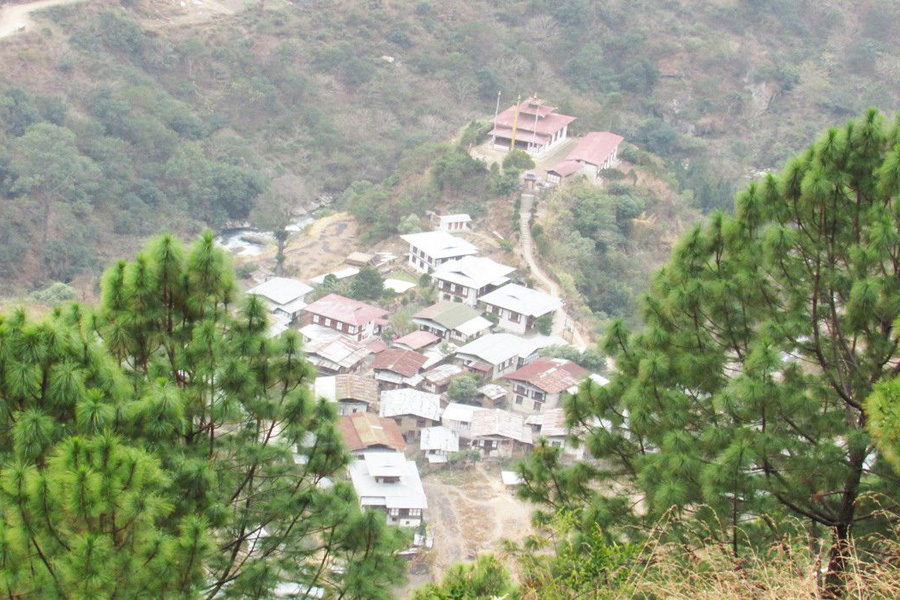Khoma Village

Khoma Village, situated approximately 11 km from Lhuentse Dzong, emerges as a cultural gem celebrated for its exquisite craft of Kishuthara, a silk woven textile. Renowned across Bhutan, Kishuthara holds a special place in the hearts of Bhutanese women for its intricate patterns and craftsmanship, with Khoma being its revered birthplace.
In the winter months, when agricultural activities slow down, the women of Khoma village immerse themselves in the art of weaving. Rows of makeshift textile cottages paint a vivid scene, where skilled women meticulously craft Kishuthara, each thread narrating tales of tradition and artistic finesse.
Beyond Khoma, women in neighboring gewogs like Minjey, Menbi, and Tsenkhar also contribute to the legacy of Kishuthara weaving. The primary raw material, brocades, is now available in retail markets, albeit at a considerable cost reflective of the extensive time and energy invested by the weavers. Crafting the most intricate Kishuthara can take up to a year, with varying costs determined by the complexity of patterns, designs, and the quality of brocades.
This age-old tradition is passed down from an early age, with girls as young as eight learning the art of weaving. They start with simpler patterns and gradually progress to intricate designs, preserving a cultural heritage that spans generations.
Kishuthara isn’t just a textile; it is a symbol of Bhutanese womanhood, worn with pride during special festive occasions such as Tshechus and Wangs. Moreover, it serves as an alternative source of income for farmers during the winter season, contributing to the economic sustainability of these communities. Khoma Village stands not only as a haven of artistic brilliance but as a testament to the resilience of traditions, weaving stories of culture, craftsmanship, and the enduring spirit of Bhutan.
Contact Us
- Alo Drukpa Tours & Treks
- Thimphu : Bhutan
- P.O Box : 1568
- +975 2 350066
- +975 17618433
- alodrukpatourandtreks@gmail.com
